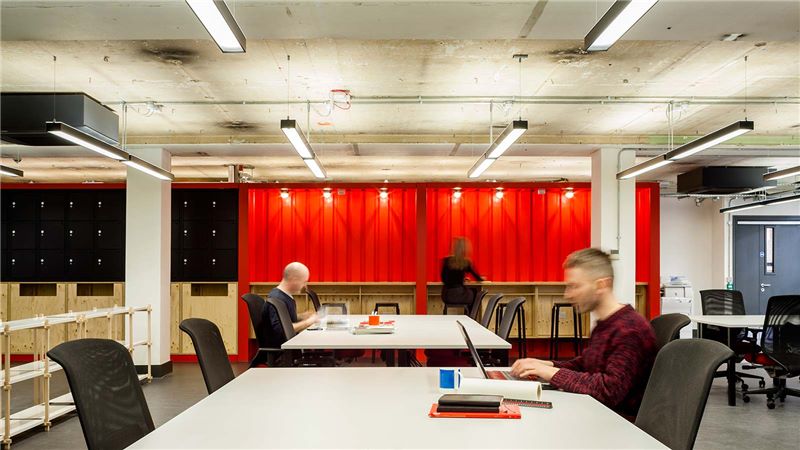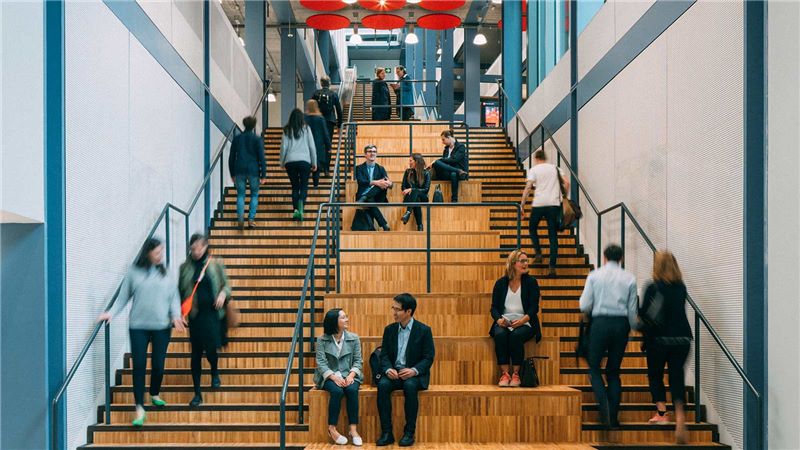The future of the workplace – what happens next?
Six months after office doors closed around the world, the question of what the future holds for the workplace remains a hotly debated topic.
The physical working landscape changed overnight but as offices are beginning to reopen, the conversation is now quickly moving from how to provide safe facilities in the short term, to the purpose of the workplace in the future and how it can better support vastly different working patterns and employee needs.
Our recent poll of global workplace experts found that, on average, companies are expecting 60% of employees to regularly work from home in the future. But while remote working has uncovered evident benefits for employees and increased productivity, the office remains a valuable asset to any business.
Why remote working is here to stay
While many office-based workers found the first few weeks of lock-down a challenge, the shift towards a more permanent home-based model is now largely being driven by employees.
With the average commute time in November last year reportedly 59 minutes, it’s no wonder that workers see the benefit of staying at home. Without the daily commute and the ability to work more flexible hours, employees have a greater work-life balance, enabling them to spend more time with family and take up leisure activities in the evening.
Productivity is up too - by an average of 20%. Less distractions and interruptions have enabled people to be more effective in doing ‘head down’ activities such as answering emails and writing reports. And meetings are reportedly more efficient and significantly more inclusive. With everyone dialling in remotely rather than sitting in meeting rooms there has been a clear break down of location barriers.
There are clear health benefits too. One company that we spoke to reported an 80% reduction in sickness absences in the second quarter of 2020. Clearly not travelling on public transport and working in enclosed, air-conditioned offices is limiting exposure to common illnesses.
It’s not all positive
Just as the office is no longer the be all and end all, working from home has its limits and challenges.
The most common downside of remote working is overwhelmingly a lack of collaboration. Remote working simply doesn’t provide the same opportunities for knowledge sharing, chance encounter conversations and creativity.
One client reported that “it is the junior employees who are most affected, - they’re asking questions that we wouldn’t usually expect and it’s clear that they’re missing out on useful learning simply from overhearing general conversations in the office”.
Remote line management is also far more challenging – not just in terms of supporting work activities but in developing relationships with teams and identifying where employee wellbeing may be suffering.
While lock-down sparked a wave of on-line quizzes and virtual events, social interaction with colleagues has been significantly impacted. We spend more time at work than anywhere else. In fact, the average person will spend a third of their life working so it’s important to socially interact with colleagues – for wellbeing, job satisfaction, motivation and to build trust and respect.
So, what should the future of the office look like?
1. Collaboration
The success of a more balanced home and office working pattern lies in adapting corporate facilities and enhancing holistic support to offer employees what the home can’t.
The days of going into the office to send emails have gone. The office is now all about collaboration but with employees going into the office less frequently, it is imperative that it is set up and designed to really facilitate chance encounters, encourage team working and support creativity.
Zonal areas, engaging meeting rooms and flexible break out spaces are essential, as are quiet areas and space for individual focused work for employees who possibly face distractions at home.
2. Culture
The office - once the hub of the company – now must work harder than ever to set a culture that is able to live on in employees while they work remotely.
The workplace experience must go beyond basic facilities and the provision of refreshments and equipment to support employees in understanding the company brand, ethos and values.
Outside of the usual working patterns, opportunities should be sought for social interaction and team activities – bringing people together to develop relationships and build a network of support for each other.
3. Management
Guidance and training should be considered for line managing remote individuals and teams should move to more frequent scheduled feedback sessions and informal check ins to make up for less face-to-face encounters.
The importance of supporting colleagues’ wellbeing should not be underestimated, especially during times of change and uncertainty. The future office should be set up to facilitate confidential conversations, encourage inclusivity and celebrate diversity so that employees feel as comfortable in the office as at home.
For sure, the office is here to stay, but now is the time to re-evaluate and transform the space and make it work harder - to fill the voids that home working has created and give employees a reason to get back together.











